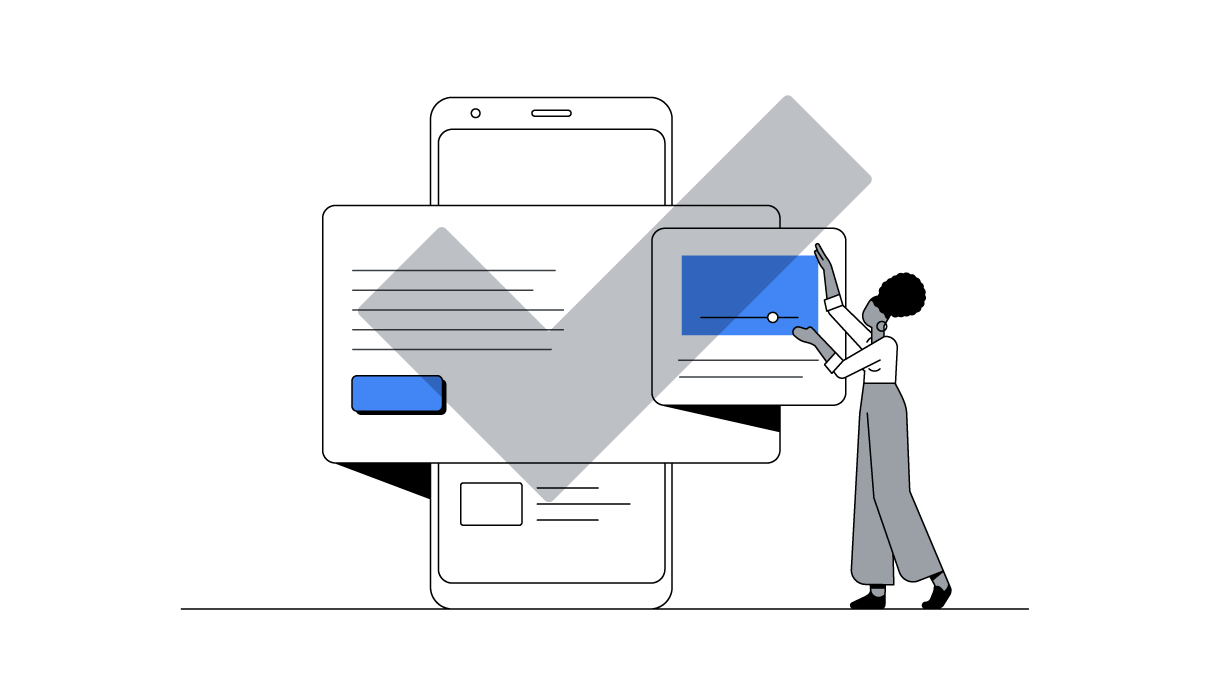Today's technology can target and customize ads with unparalleled precision. At the same time, busy consumers expect ads to be both incredibly compelling and highly relevant. With consumers using multiple devices, creative must seamlessly move across them. Marketers also need to measure and optimize faster than ever. Google's Creative Platforms Evangelist, Pete Crofut, talks about how new tools and platforms can address these challenges, helping marketers create "intelligent" ads that are engaging and meaningful to consumers in the moments that matter.
Intelligent, engaging, creative. This may sound like a personal ad, but it’s also the future of ads in general. In fact, advertising is getting more personal, more engaging, more interesting and more thought-provoking than ever.
Today's technology can target and customize ads with unparalleled precision. At the same time, busy consumers expect ads to be both incredibly compelling and highly relevant, and thus meaningful to them at that moment. This means that while the opportunity is bigger than ever, the stakes are higher too. If your brand "matches" with a potential consumer, you might have one chance to make a first impression, so it had better be a good one.
Adding to this are technological obstacles. With consumers using multiple devices, creative must seamlessly move across smartphones, desktops and tablets, a demand that can seem daunting to marketers inexperienced with HTML5 and the coding needed for such content. Marketers also need to know a campaign's effectiveness and be able to scale it more broadly when it succeeds.
To overcome these challenges, we need to change the traditional way of reaching audiences by prioritizing focused engagement over broad exposure. We also need to rethink how we talk to audiences. Once your brand is in front of the best people, are you delivering the most relevant message? Are you catching and holding their attention?
To do so, a good place to start is to leverage the technology and platforms available to you. They can be used to develop creative solutions that are engaging, relevant, measurable and scalable—in a word, intelligent. But how do creatives actually use technology to build more intelligent ads? And how do marketers piece together the right joint media and creative solution to make the message relevant for every viewer?
Create compelling and engaging brand experiences
The ad experience of today needs to be about great content and look less like the static image ads of the past. Advertisers must use creative formats and features in new and innovative ways to bring their brands to life for consumers.
For one, creatives can use the expanding digital landscape to tell their brand's story. New display ad formats allow brands to build rich, beautiful content with video, digital catalogues and more. They can expand and cascade, adding flexibility to the ad without adding square footage to the unit itself. (Jaguar effectively tripled the size of its ad this way.)
To ensure the content is engaging, marketers must hand over some control to the consumers themselves. It's no longer just about delivering the experience: it's about building in interactive features that let users choose what they want to experience. Take Stride gum's Gumulon campaign, designed by agency Wieden+Kennedy and game developers Johnny Two Shoes. The goal was to deliver an experience that would stay true to the Stride customer. The result was a game controlled by, you guessed it, chewing. Chew-control technology tracks your mouth with your mobile device's front-facing camera, so the character moves each time you chew. It's a great example of a brand that's in tune with its audience.
Finally, advertisers will want to consider how their campaign engages the audience over the long term. Incorporating social media and creating a community experience for individuals will help them feel invested in the brand not just for the duration of a two-minute video, but for the foreseeable future.
This was part of 360i's approach for the Oreo Daily Twist campaign. Oreo's parent company, MondeleÌz International, wanted to celebrate the brand's 100th birthday in a unique way. The challenge was to embrace Oreo's history while appealing to new generations. In an effort to become more relevant to millennials, a growing demographic for the brand, 360i decided to re-imagine pop culture through the eyes of Oreo. Instead of a one-shot attempt at engaging the audience, it created a campaign that spanned 100 days. Each day a new piece of social content was created based on top storylines.
Connect data and creative
Direct response marketers have used customer data to shape their marketing messages for decades. Thanks to developments in technology, the emergence of integrated platforms and powerful targeting technologies such as programmatic buying, now brand marketers can and should do the same.
Media agencies have access to all kinds of touchpoints: contextual data, audience and demographic data and more. So they have a pretty clear picture of the audience they're targeting. But what about the messaging? The creative? Data and creative need to be in sync and part of the same conversation from the get-go. Brands need to look at how the two can intersect so that the best message, video or call-to-action reaches the right person at the right moment.
To make this dynamic creative happen, media and creative agencies have to begin talking much earlier in the game. Designers and creative art directors have to collaborate with their digital counterparts from the start so that each element of the campaign is built with data fueling the creative, not bolted on as an afterthought.
Take, for example, the YouTube Masthead unit designed for YouTube Comedy Week, a week-long live event. The dynamic creative allowed users to pan across a wall, zooming in and out on each day's schedule and its performers. By using DoubleClick Studio, they were able to build one ad template to accommodate multiple markets so the creative would be relevant to specific languages, performers and a country's unique sense of humor.
Build multi-screen creative
Another key takeaway for marketers is that creative must cross several screens. Marketers must appeal to a multi-device culture in which consumers are simultaneously watching videos, texting and surfing the web with their smartphone, laptop, tablet and more.
Consumers interact with their mobile devices differently from how they do their desktop or laptop—touching, shaking and flipping the screen—and marketers must provide content that can engage them in these different ways.
To serve this multi-screen world, creatives are turning to HTML5, the new standard for digital advertising, which allows for the creation of campaigns following the "one idea, many screens" model. According to a DoubleClick Mobile Survey conducted in September 2013, ad execs expect their agencies to increase their smartphone and tablet work by more than 40% by September 2014.
Working across screens was a priority, albeit a challenge, for the team behind the Burberry Kisses campaign, which let people send digital notes sealed with a kiss to loved ones all over the world. Tasked with creating a complex experience that worked similarly across desktops, tablets and smartphones, they used HTML5 to help ensure the same level of engagement for all devices.
And new tools are making HTML5 more accessible than ever. These include Google Web Designer, Adobe Edge Animate and Celtra, which make design central to their offerings and simplify the coding process, allowing marketers to construct HTML5 ad units complete with ad tags and reporting metrics.
Measure and scale
With all of these pieces in place, marketers will then want to take steps to ensure that the impact of their campaigns can be measured and learnings can be applied to future campaigns. Using an integrated platform that tracks ad performance across campaigns, they'll be able to gather and interpret this information most effectively. This means that all of your marketing tools—ad server, programmatic buying engine, rich media creation tools and more—are in one place and able to provide a full at-a-second glance of how your campaign is doing.
With an integrated platform, marketers will also want to take a more comprehensive approach to what they are measuring. Beyond the impressions and click-through rates of standard banner ads, engagement metrics can offer a clearer picture of audience engagement. View time, video completion rate, hover time and expand rate can all be tracked to see not only whether a consumer was initially drawn to a piece of content but how deeply he or she engaged with it. The tracking capabilities are now in place to measure when, where and for how long someone interacts with an ad. The data drawn from these measurements can then be applied to future campaigns.
And the rich media itself, which can be scaled to different devices and media, can also help extend the life of creative assets. HTML5 Studio Layouts, for example, let you repurpose creative assets, so what was initially created for TV or a desktop can be scaled easily to a tablet or smartphone.
You may get your ads in front of the right people in the moments that matter, but if your creative message isn't compelling or relevant, you've lost your opportunity to engage with the consumer. Today we have tools and technology to help make sure that doesn't happen. But agencies need to be willing to use what's at their disposal. If not, consumers will likely just look the other way.







